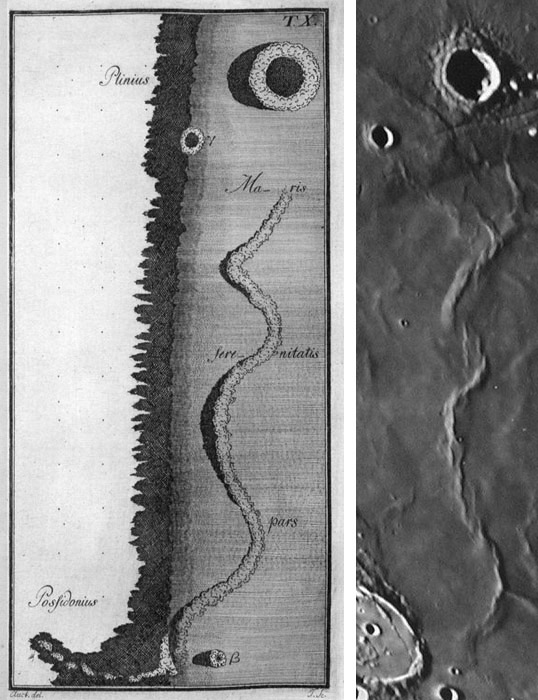Depicting And Understanding
Originally published January 16, 2012

|
left drawing from Schröter (1791) and right image from Consolidated Lunar Atlas (1966). ScHröter's drawing is remarkably accurate.
There is one type of lunar fault that is very common - dozens of them even have names - but whose origin is not often realized by observers. Mare ridges, which used to be called wrinkle ridges, are low ridges only a few dozens to a hundred or so meters high, that snake along maria for hundreds of kilometers. The most famous example is the Serpentine Ridge in eastern Mare Serenitatis. Mare ridges like the Serpentine example are low angle faults that rearrange thick piles of mare lavas. After the lavas cooled and solidified, the basins that held them subsided due to the weight of the maria, fracturing and forming concentric rilles around the edges. A different type of accommodation was necessary for the massively heavy, conical pile of mare lava to fit into a smaller volume of the sunken basin floor. This subsidence caused parts of the brittle lava to fracture and slide over adjacent pieces. The mare pile became doubled along these ridges to accommodate its reduced diameter. Many concentric mare ridges are along the same circles as isolated peaks that mark buried inner basin rings, suggesting that the buried mountains anchored the faulting.
Chuck Wood
Related Links
Rükl plate 24
|
Yesterday's LPOD: And On Your Left
Tomorrow's LPOD: Four And One
Register, Log in,
and join in the comments.




